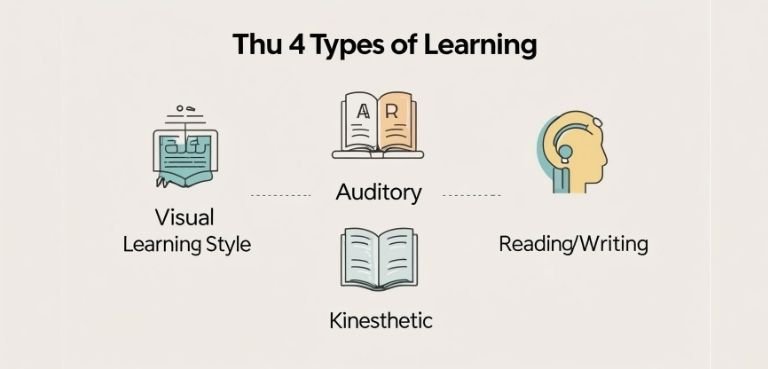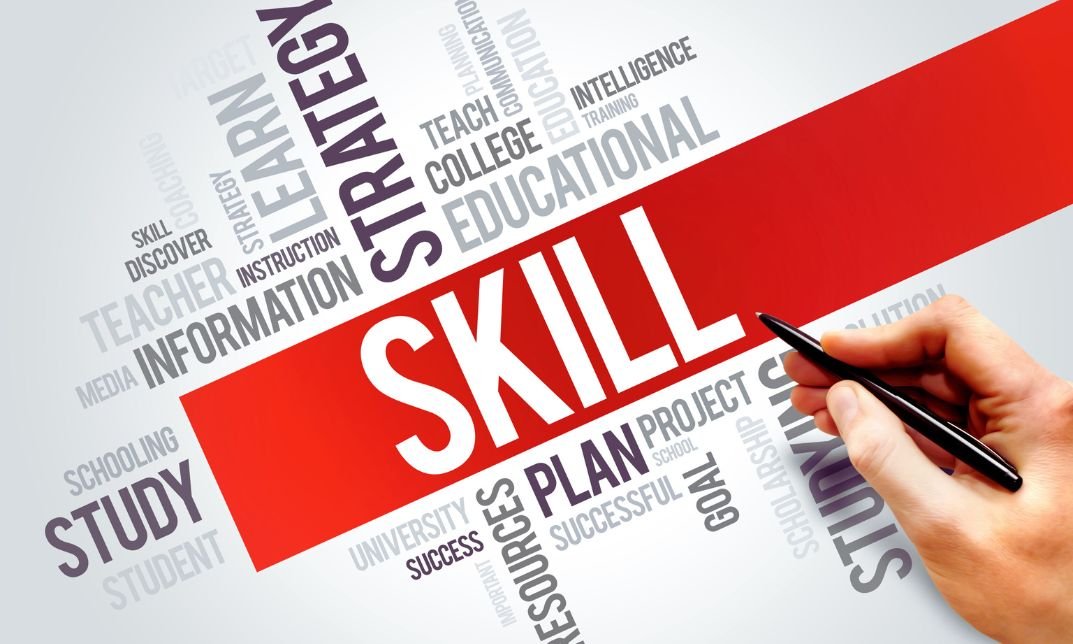No products in the cart.
You asked, “What are the 4 types of learning?” The quick hit: visual, auditory, reading / writing, and kinesthetic. Know them and you unlock lessons faster, save revision time, and dodge study pain. Each style taps a different sense, so your brain grabs facts in the way it likes best. Let’s break them down, laugh at the awkward bits, and build tricks you can use today.
What are the 4 types of learning? Quick Snapshot

Visual learners think in pictures and charts. Auditory learners catch ideas through sound and talk. Reading / writing learners thrive on words, lists, and notes. Kinesthetic learners need movement and hands‑on tasks. You may lean on one style or jump between several. The key: match tasks to your dominant sense and watch skill growth speed up.
Visual Learning: Show Me and I Get It
Bright slides, clear graphs, and tidy mind maps make your brain cheer. You replay a YouTube demo and spot each move. Colours help you file facts, so you highlight in traffic‑light shades—green for basics, amber for tricky bits, red for red‑alert rules. On a ward, you tape photo guides above sinks to keep hygiene steps sharp. Planning a project? Sketch a timeline on a whiteboard. Your eyes steer your thinking, and the plan sticks longer than spoken tips.
Quick wins for UK visual learners
- Turn lecture notes into simple infographics.
- Stick flow charts on your fridge door.
- Map complex NHS policies with icons and arrows.
Auditory Learning: Tell Me and I Remember
Podcasts feel like lectures made for you. You soak up radio interviews on the commute. Study groups work well because they lock knowledge in. You re‑explain the steps aloud while cooking tea. Revision time means reading notes into a voice memo, then replaying them during a dog walk. Sounds carry rhythm, so acronyms and jokes help recall—think “DR ABC” in first‑aid drills. At work, you repeat new phone procedures out loud before taking calls.
Quick wins for UK auditory learners
- Record meetings (with consent) and replay key parts.
- Swap long emails for short voice notes on Teams.
- Use rhymes to fix medication timings in memory.
Reading / Writing Learning: Give Me Words and Lists
You live for well‑structured handbooks. Long articles feel soothing. Clear headings guide your eyes, and bullet lists calm chaos. During training, you rewrite slides in your own words. Flashcards beat fancy apps because writing cements detail. You visit NHS sites before asking a supervisor. Revision sessions involve making fresh summaries each night. When friends ask for help, you draft a one‑page cheat sheet.
Quick wins for UK reading / writing learners
- Keep a tidy digital folder tree for fast document grabs.
- Create checklists for every new process.
- Write reflection journals after each shift to track gains.
Kinesthetic Learning: Let Me Move and Do
Sitting still feels like waiting for a bus in the rain. You learn by doing. Show you how to hoist a client once, then let you try. Muscles fire, and steps click. You pace the lounge while memorising care codes. Role‑play beats lectures, so you practise difficult conversations with a mate. Break long study blocks with star jumps or a brisk loop round the block. In workshops, you grab props first. Touch and movement make theory real.
Quick wins for UK kinesthetic learners
- Turn safety drills into timed races.
- Build model layouts with Lego to plan ward design.
- Walk while reading notes aloud to lock both senses at once.
Mixing the 4 Types in Real Life
Real tasks rarely fit one box. A nurse may watch a wound‑care video (visual), repeat steps with a coach (auditory), read the protocol (reading / writing), then dress the wound (kinesthetic). Layer styles and you cover gaps. Your brain loves multi‑sensory hits; memory sticks deeper, and recall speeds up under stress.
How to Spot Your Style and Use It
Notice study habits that feel natural. Check which tasks drain or boost energy. Test mini hacks from each list and score results. Friends’ praise offers clues: “You explain things well” hints at auditory strength. Once you spot a lead style, lean on it for tricky topics, then sprinkle the others for backup. Custom fit beats one‑size‑fits‑all.
Busting Myths About Learning Styles
Myth one: You can only use one style. Truth: You hold all four, just with different strengths. Myth two: styles never shift. Truth: roles and life stages tweak needs. A hands‑on apprentice may learn reading / writing during manager training. Myth three: one style equals instant success. Truth: effort still rules. Styles simply cut wasted effort.
Everyday Examples Across the UK
- A Manchester apprentice plumber watches a pipe fix video, then bends copper on-site.
- A Brighton teacher listens to a pedagogy podcast while jogging, then blogs key points.
- A Cardiff care worker rewrites medication steps, then drills them with a partner.
- A Glasgow chef tests a new recipe by cooking four mini batches and tweaking flavours.
Tiny Habits That Boost All Styles
Plan micro breaks every 25 minutes. Switch the sense focus during each pause. Sketch a concept, teach it aloud, write it down, then act it out. This cycle cements memory and stops boredom.
When Learning Styles Clash in Teams
Meetings stall when everyone uses one format. Blend slides, chat, documents, and demos to reach all brains. Ask teammates how they take info best. Respecting styles lifts understanding and trims follow‑up confusion.
Tracking Progress the Smart Way
Set clear goals like “nail manual handling assessment by Friday”. Measure success with real tasks, not vague feels. Keep a progress log. Update it weekly. Seeing numbers climb boosts dopamine and fuels the next push.
Your Brain, Your Rules
Brains stay soft like clay, even past fifty. Switching styles flexes fresh neural paths. Neuroplasticity loves variety. So, try a new trick each week, and the mind stays sharp.
Conclusion: Turn Styles Into Skills
You now own the answer to “What are the 4 types of learning?” Use it to cut study stress, smash new tasks, and help others learn faster. Mix methods, note wins, and tweak often. Learning stays lively, not dull, when you play to your senses and switch things up.
Ready to put these styles to work? Enrol in our online Personal Development courses at Wise Campus today and learn the way that suits you best.







